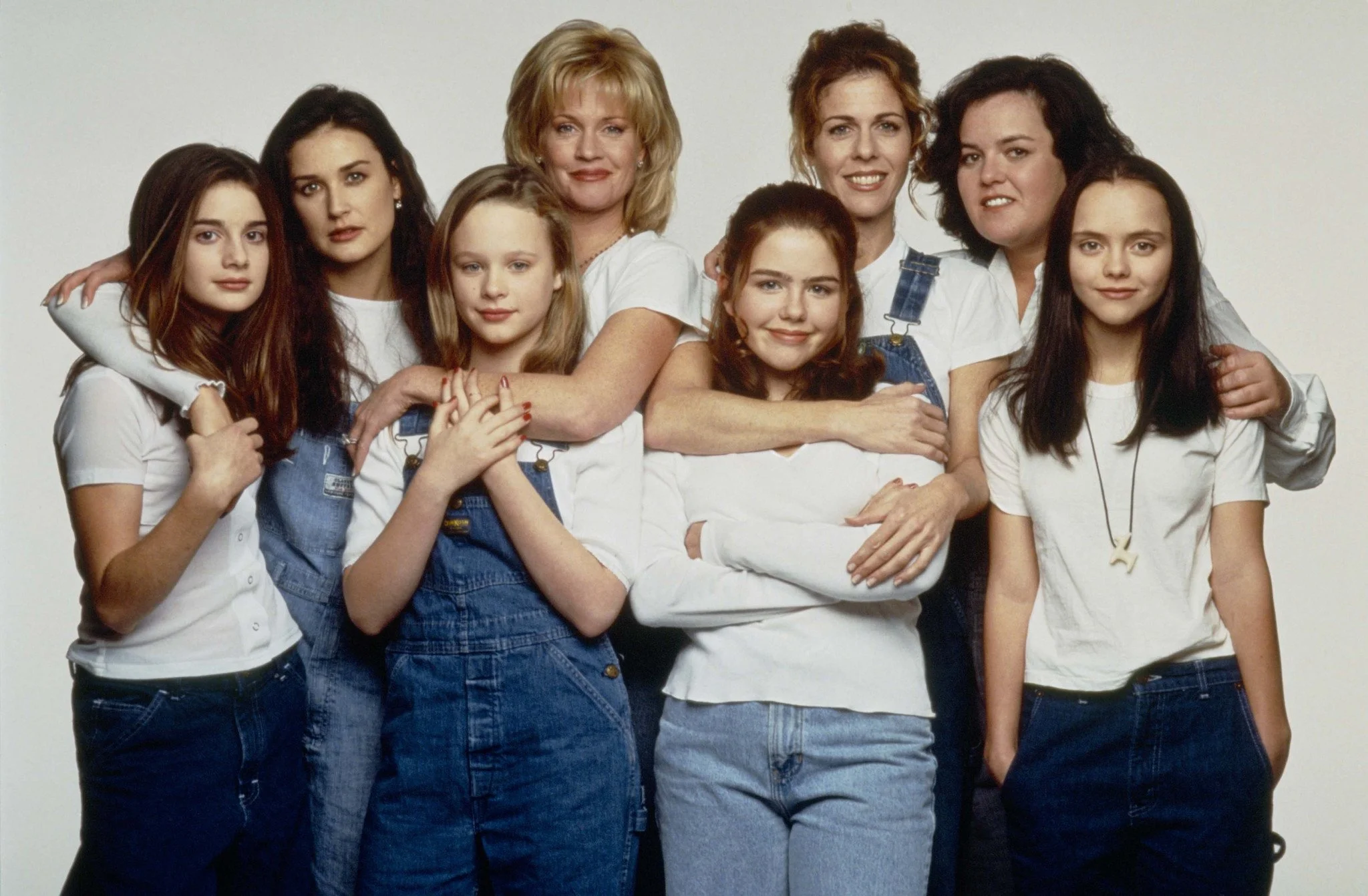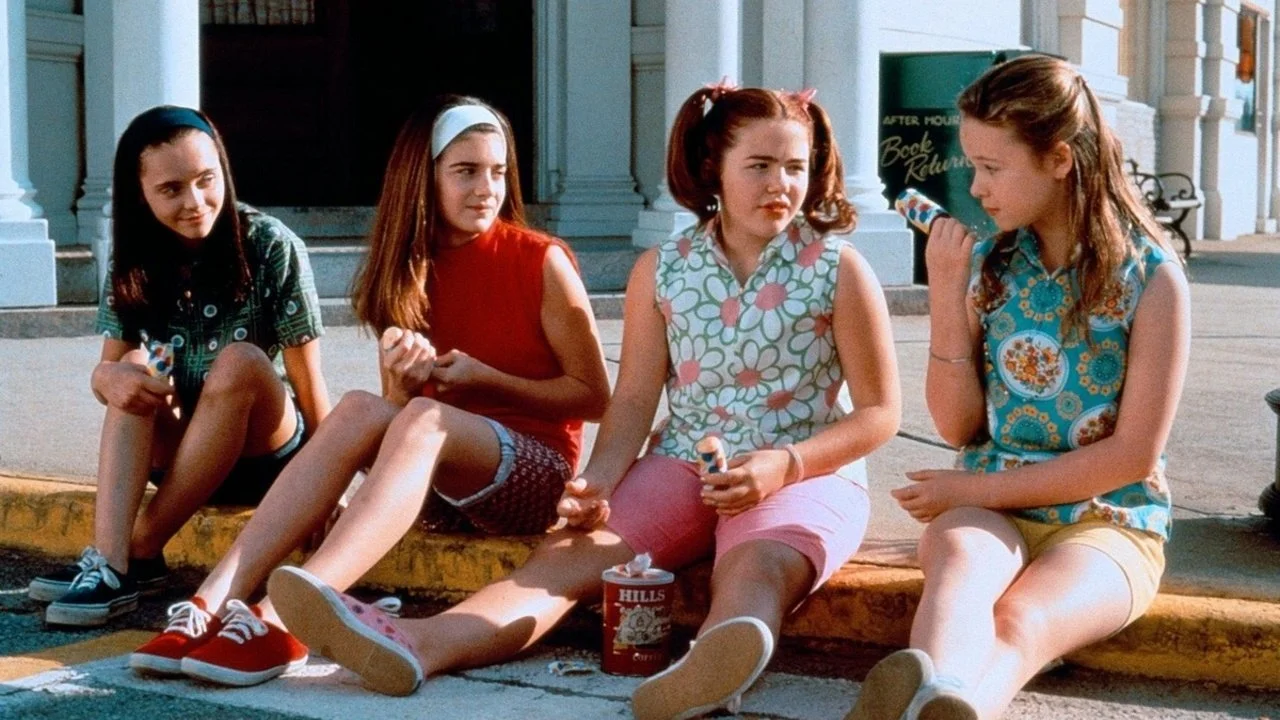The Timely Relevance of Now and Then (1995)
Thirty years after its premiere, Now and Then maintains relevance in an entertainment landscape that often still fails to provide authentic stories for and about young women. This film, the first feature from Lesli Linka Glatter (who is both a Texan and current president of the Director’s Guild of America), may be set in 1970 and 1995, but the friendship between the four girls feels timeless, as does the honest examination of how that friendship shifts as the girls grew up and apart.
Glatter’s ability to create cohesion between a total of eight lead actors is largely due to the casting. The adults playing Tina, Samantha, Roberta, and Chrissy (Melanie Griffith, Demi Moore, Rosie O’Donnell, and Rita Wilson, respectively) may not be perfect matches in appearance to Thora Birch, Gaby Hoffman, Christina Ricci, and Ashleigh Aston Moore, but the later timeline is still believable; Griffith and Birch share the same flirty cadence, for example, and O’Donnell’s version of Ricci’s sarcasm feels true to the younger character’s personality while realistically reflecting a more adult mindset.
Of course, we cannot talk about the child actors without acknowledging Devon Sawa, who was recommended by Casper co-star Ricci. Sawa was already on the cusp of heartthrob status, and his brief but impactful turn as Scott Wormer marks a significant turning point in many peoples’ sexual awakenings. Thankfully, Now and Then is a rare kind of film that can address adolescent sexuality honestly and appropriately. One can reasonably posture that this is largely due to the film being written and directed by women. With I. Marlene King’s script, Glatter portrays this seminal time in a young person’s life while maintaining some sense of innocence.
This is in stark contrast to most coming-of-age films viewed by adults, such as the 1986 Rob Reiner hit Stand by Me. Many feel compelled to compare the two, such as Roger Ebert: “What distinguished Stand by Me was the psychological soundness of the story. We could believe it and care about it. Now and Then is made of artificial bits and pieces.” I would argue that Ebert’s criticism ignores the scope of this film; it echoes the common misconception about the interior lives of adolescent girls. These “bits and pieces” are anything but artificial. We see the four girls facing truths both external (death, tragedy, family dynamics) and internal (body image, sexuality, mortality). Roberta’s discomfort with her changing body is, through that lens, just as significant as Samantha’s fracturing family. To the adolescent mind, each of these pieces is a crucial moment of their personal development.
If we must compare coming-of-age narratives, Now and Then is more true to the bildungsroman structure: the impact of the many events, and the varying themes they represent, is illustrated in their adult forms. We are given ample evidence of not only how each girl changed over the summer of 1970, but also how those events still resonate with them in 1995. However, let us not compare; rather than being pitted against other films, Now and Then deserves its own conversation.
If you enjoyed this article, please consider becoming a patron of Hyperreal Film Journal for as low as $3 a month!



Writer, guilty pleasure enthusiast, karaoke zealot. @kathkathkath for pictures of flowers.